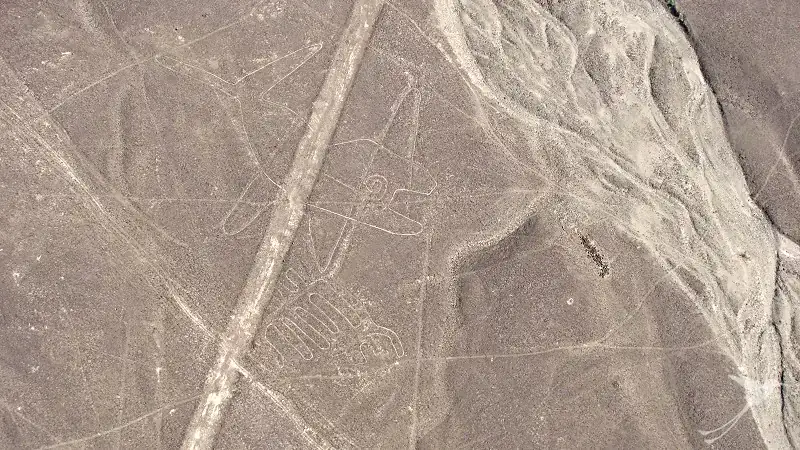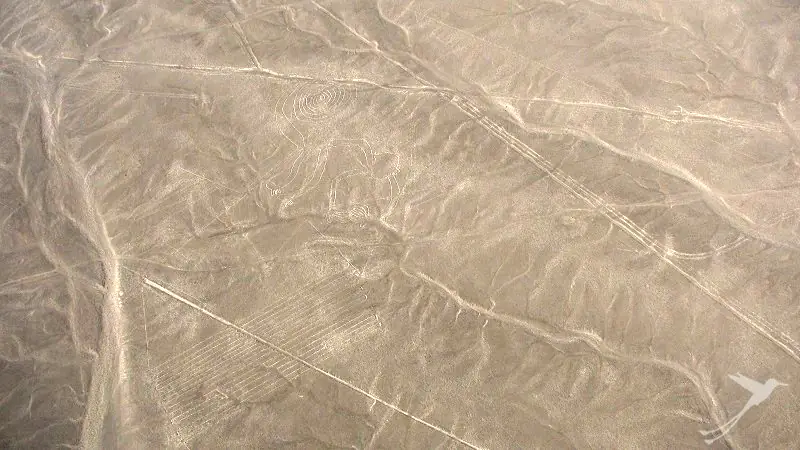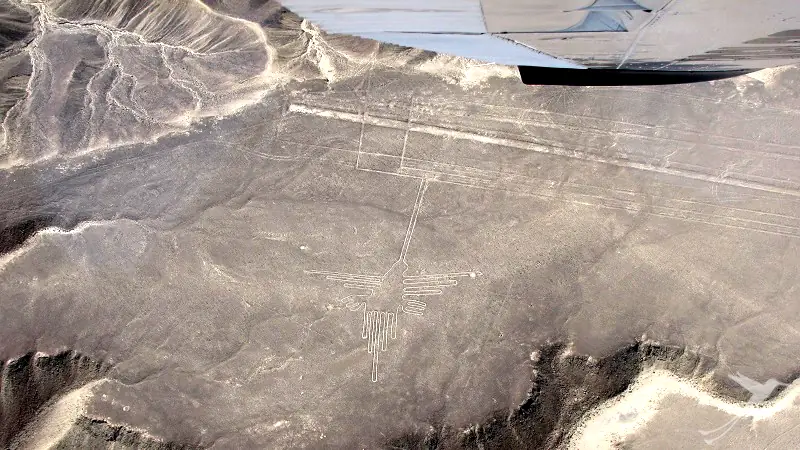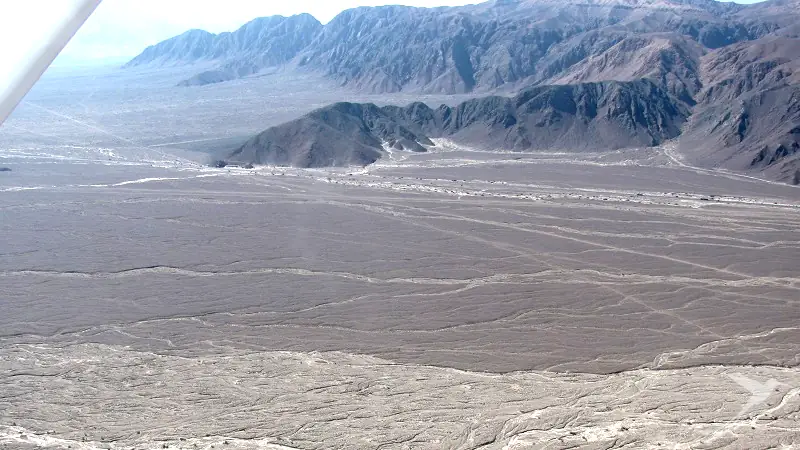
The mysterious origin and meaning of the Nazca Lines
Lines, shapes and figures – meters long and sometimes only visible from the air. Centuries old in the Peruvian desert. These are the Nazca Lines. But who drew them in the first place? How did they come to be so well preserved? And what do they mean? In today’s blog, we want to delve a little deeper into the mystery of the Nazca Lines and answer your questions as best we can.

Basic facts about the Nazca Lines
In 1927, the lines were discovered by pilots whose flight route passed over them coincidentally. The field of the Nazca Lines extends over 500 square meters and is located about 400 kilometers south of Peru’s capital Lima in the Ica region. The field lies just less than 40 kilometers inland from the coast of the Pacific Ocean. It comprises 70 drawings and over 500 other illustrations. The images range from simple lines or geometric shapes to highly intricate, huge drawings of animals that can only really be seen from the air. Some are so large that they can even be seen from space, the largest drawing being a pelican 500 meters across. The age of the Nazca lines is around 1500 to 2000 years.

The Nazca people
As it is not known what the people called themselves, they were given the name of the nearby city of Nazca. The Nazca lived in the desert oases from around 200 BC to 600 AD. They themselves had no writing, which also explains why no such text can be found anywhere among the lines. The people lived in simple wooden and reed huts. In addition to the world-famous lineages, Nazca temples have also been discovered, with over 600 dead and various well-preserved remains of offerings. These ranged from fruits to vases, which were also discovered at various altars around the Nazca lines. In order to survive in the dry desert, the Nazca developed a complicated irrigation system, which is still used today in a modernized version. Although there was usually one rainy season a year, this often did not bring enough rain to supply the people for a whole year, and sometimes there was no rain at all. For this reason, the Nazca dug meter-long underground tunnels, the so-called “piquios”. These then collected the water that was under the earth’s surface and channelled it to reservoirs for storage and use. As with our canals today, they had regular holes (canal shafts in our case) through which they climbed into the piquios to clear obstacles out of the way. Despite this ingenious system for the time, the Nazca could not survive in the dry desert and it is assumed that they either died out or moved to more humid areas with other peoples.

Origin of the Nazca Lines
The Nazca Lines are what are known as “Scatch-pictures”, or geoglyphs. They were created by clearing away the dark layers on the earth’s surface. This exposed the lighter subsurface, which served as a kind of “color”. They are still so well preserved today because they were carved up to 40 cm deep into the earth and the dry climate meant that these cracks did not run or fill in. Some of the lines are older than the Nazca, so the previous people, the Paracas people, must have started drawing with this system before.
Theories about the meaning of the Nazca Lines

There are countless theories about the significance of the Nazca Lines, none of which have yet been proven. As always, however, there are of course more realistic and more unrealistic theories. While one person thinks that the lines served as a sketch of the land for aliens who drew them themselves, the next thinks that they were drawn by the Nazca to communicate with aliens. If you ask the next person, he will try to explain that they have an astronomical or calendric meaning that we have not yet been able to decipher. The lines could therefore represent an astronomical book, a sacred road, a landing site or a history book.
Incidentally, one of the first researchers of the Nazca Lines was the German mathematician, physicist and geographer Maria Reiche. She was already living in Lima at the time the lines were discovered and began her research after the end of the Second World War (she was not allowed to leave Lima before then). To avoid having to travel so far, she even moved into a simple local hut without water or electricity. For a whole 40 years, she uncovered and measured drawings by hand, initially without a team to support her. Her theory was that the drawings represented an astronomical calendar to observe or predict solstices and other celestial phenomena.
In addition to Maria Reiche’s theory, another well-known theory is that of ritual, ceremonial and religious significance. Many researchers are of the opinion that the drawings had spiritual meanings for the Nazca people and that they tried to conjure up rain or fertility through rituals, for example. The drawn hummingbird could thus serve as a mediator between heaven and earth and the monkey was regarded as a divine being at the time and could therefore have been used to communicate with the gods. However, this theory cannot explain the various forms and their meaning. On the other hand, Maria Reiche’s theory cannot explain the drawings. One of the most interesting drawings is that of an astronaut, which would underline the alien theory – after all, we didn’t have rockets back then, nor astronauts moving in space.
Conclusion
So there is not a single theory that seems completely comprehensible and logical, the meaning of the Nazca Lines and why they were created in the first place is still a mystery that will probably never be solved. But it is precisely this mystery that makes the site so interesting that it is one of the most popular tourist destinations in Peru. Many also call the lines the eighth wonder of the world because they are simply so incredibly fascinating. If you want to see the lines, it is best to do so from the air, as it is difficult to see much from the ground due to the immense size of the figures and drawings. Various tours are offered in small sports planes, which circle over the most famous drawings at an altitude of 300 meters for around 35 minutes and explain the various theories in more detail.

If you would like to visit these mysterious Nazca Lines, don’t hesitate to contact us, we will be happy to create your own personalized trip to the “eighth wonder of the world”.







